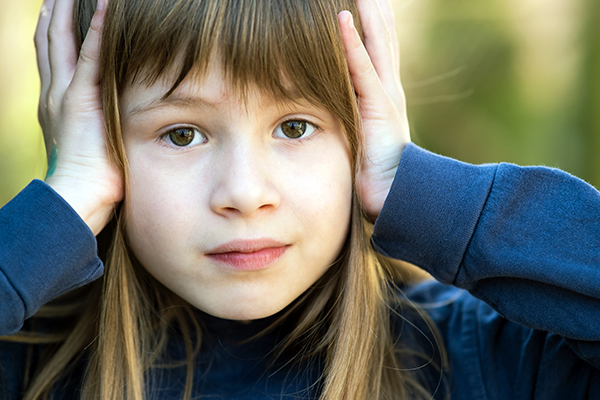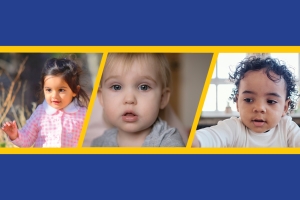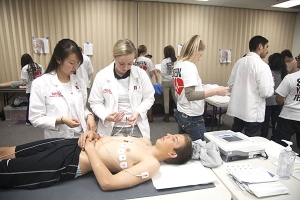
Not long after my 12-year-old daughter had (what I thought was) an extreme reaction to the sound of me eating a sandwich, we discovered she has a disorder known as misophonia. Misophonia is a neurological condition that causes an aversion to specific sounds, prompting feelings of annoyance or anger. The onset of misophonia often begins in childhood or adolescence, but according to the Cleveland Clinic, research indicates that it may affect up to 1 in 5 people during their lifetime.
People who have misophonia have little tolerance for the sounds of chewing, crunching, heavy breathing, the clicking of a pen and other similar noises. They tend to especially react to sounds made by people they are closest to, such as family members. My daughter’s aversion to sound is mostly related to chewing during family meals.
Dr. Eric Storch, a clinical psychologist and professor at Baylor College of Medicine thinks that kids and teens living with the condition are more likely to be triggered by family than friends. “You can be honest with your family—maybe more honest than you should be,” he says. “I also think the frequency and proximity to family members impacts the reaction.”
The cause of misophonia is unknown, but Dr. Storch explains there is a high co-occurrence with other psychological disorders, such as anxiety, obsessive-compulsive disorder and Tourette syndrome. “Clinically, I have seen high rates of people with misophonia and conditions that are associated with emotional dysregulation, like depression,” Storch says. People who have misophonia are always anticipating the next trigger, living their life waiting for the next sound that will cause discomfort, he explains.
There are strategies that have proven helpful in treating misophonia, including cognitive-behavioral therapy (CBT) and visual imagery. CBT treatment teaches the misophonic person ways to regulate the effects of misophonia and how to relax, rather than anticipate triggers.
“Therapy that focuses on thinking things through objectively can be helpful,” says Storch, “as can learning how to deal with things in a more direct [way].”
Visual imagery, which involves visualizing a different association with a distressing sound, can also be effective. “When you hear a chewing sound, you can imagine a different visual and unpair the sound from where it is coming,” explains Storch.
Other forms of treatment may include tinnitus retraining therapy (TRT), music therapy and occupational therapy. “This is still something we are trying to investigate and understand,” Storch says.
While researchers work on developing a better understanding of misophonia, my daughter found a strategy that is not only effective, but simple: she wears noise-canceling headphones when sounds bother her.
Cheryl Maguire is a freelance writer with a master’s in counseling psychology. She is married and the mother of twins and a daughter.
Where to Find Help
Find local providers of cognitive behavioral therapy, music therapy or occupational therapy by visiting www.specialneedsresourcefoundationofsandiego.com/special-needs-resources/san-diego, and putting the preferred therapy into the “search for resources” box.
Learn More
Learn more about misophonia at https://mhcsandiego.com/blog/a-guide-to-misophonia-treatment-options-and-therapies-a-holistic-approach-at-the-mental-health-center-of-san-diego.



















